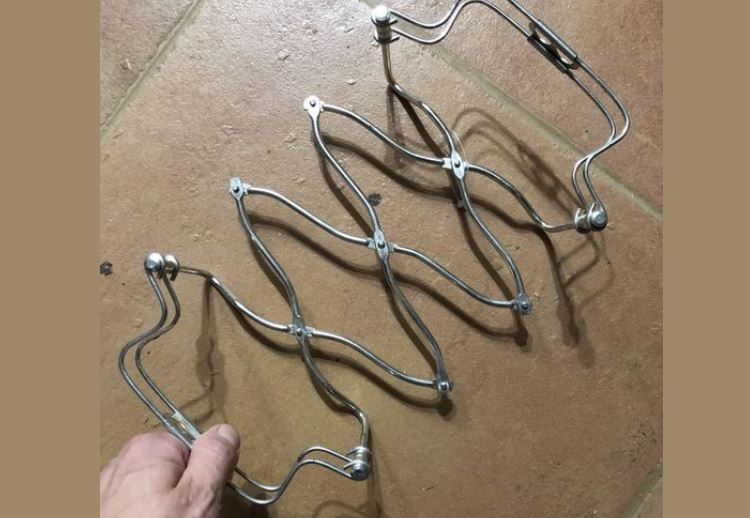A mysterious stainless steel accordion-like object, marked “Made in Italy,” has been discovered at a thrift store. Its durability and ability to compress and extend have sparked curiosity about its origins and purpose. As it turns out, this vintage gadget is a casserole caddy trivet, a practical kitchen accessory that emerged in the mid-20th century.
During this era, home cooks sought innovative ways to make serving and storing hot dishes more convenient and stylish. The caddy’s design featured a wireframe structure that could be expanded to accommodate various sizes of casserole dishes. Its metal construction and expandable design reflected the growing emphasis on functionality and aesthetics in home cooking.
The primary purpose of the casserole caddy trivet was to provide a stable and heat-resistant surface for serving hot dishes directly from the oven or stove to the table. Its expandable feature allowed it to fit a range of dish sizes, making it versatile for different cooking needs. The metal wire construction helped protect countertops and tables from heat damage, while the caddy’s design often included raised edges to prevent dishes from sliding.
In addition to its practical uses, the caddy also served as a decorative element in the kitchen or dining area, adding a touch of vintage charm to meal presentations. Its functionality extended beyond just serving; it also made transporting hot dishes more convenient and safe.

The legacy of the vintage casserole caddy trivet lies in its blend of practicality and design. As a symbol of mid-20th century kitchen innovation, it represents a time when functionality and aesthetics were harmoniously integrated into home cooking tools. Today, these trivets are cherished not only for their utility but also for their nostalgic value, reflecting a bygone era of kitchen design. The vintage casserole caddy continues to be celebrated for its unique combination of form and function, serving as a reminder of the craftsmanship and ingenuity of past generations.


